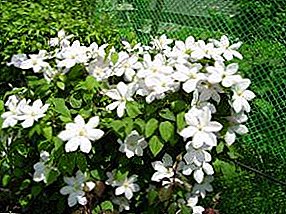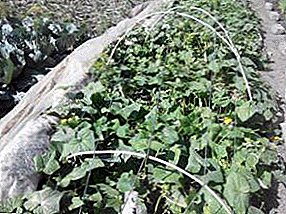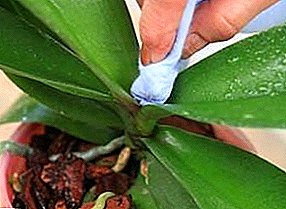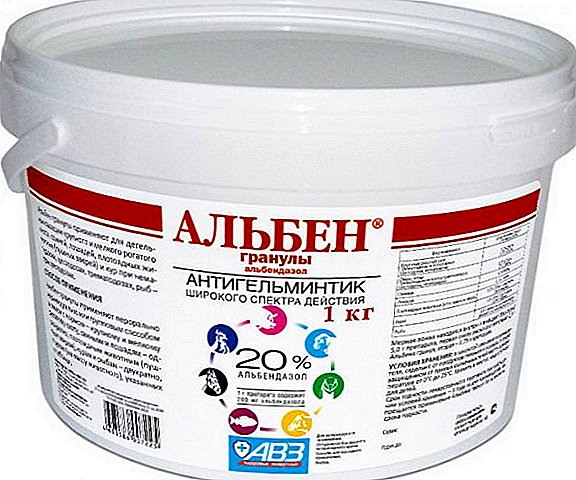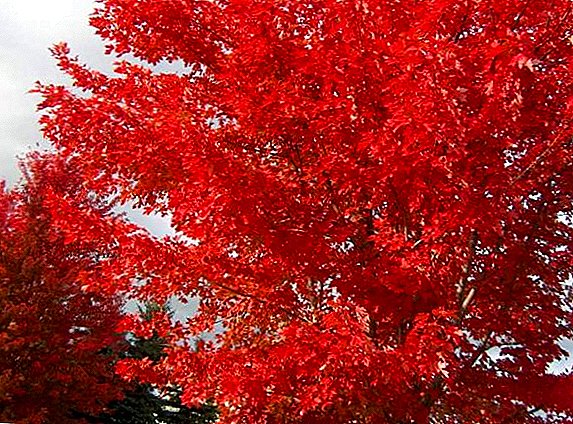 Pyrethrum - This is an ornamental plant of the Astrovie family, not particularly demanding to care.
Pyrethrum - This is an ornamental plant of the Astrovie family, not particularly demanding to care.
It is ideal for those owners of summer cottages who have little time to care for a flower garden. Among people, feverfew is sometimes called garden chamomile.
Popular varieties of feverfew
In decorative gardening, pyrethrum has been used for several centuries. This genus includes many species, but most often you can find such:
 Pyrethrum rose (Pyrethrum roseum) - one of the most common species from which modern varieties originated, united by the name feverfew hybrid.
Pyrethrum rose (Pyrethrum roseum) - one of the most common species from which modern varieties originated, united by the name feverfew hybrid.
Basically has terry inflorescences with pink, white and rich red flowers.
Pyrethrum red (Caucasian chamomile).
Feverfew - perennial up to 50 cm, characterized by branchy upright stems. The carved leaves of this plant look like chrysanthemum leaves. The bush itself is compact and very lush.
The cinquefoil cinquefoil will not only decorate your garden, but will also benefit the family.
Enotera, landing and care //rusfermer.net/sad/tsvetochnyj-sad/vyrashhivanie-tsvetov/enotera-mnogoletnyaya-posadka-i-uhod-za-rasteniem.html.
Find out here everything interesting about periwinkle plant.
Sowing seeds and growing seedlings
Pyrethrum is propagated using seeds. If you want to grow seedlings, then they need to be sown in loose fertile soil, and sprinkle the top with a layer of no more than 5 mm in thickness.
Next, you need to cover the container with glass and wait until the seeds germinate. After that, the glass is removed and placed a box with seedlings in a well-lit place with a temperature of not more than 20 ° C. In the ground, young plants can be planted in May - June.
You will see the first pyrethrum flowers approximately 3 months after planting the seeds.
Secrets of breeding carnations Turkish.
Features of growing tsiniya //rusfermer.net/sad/tsvetochnyj-sad/vyrashhivanie-tsvetov/tsinnii-vyrashhivanie-uhod-borba-s-boleznyami-i-vreditelyami.html.
Care for feverfew
Pyrethrum - a very unpretentious plant. It feels great both in the sun and in partial shade and even in the shade. It is not afraid of cold weather and can safely withstand slack frosts down to - 5 ° С. Practically any soil is suitable for garden chamomile.
 The exceptions are poor sandy soil and areas that are constantly flooded with water. If the soil is loose and fertile, feverfew grows into lush bushes with large, beautiful buds.
The exceptions are poor sandy soil and areas that are constantly flooded with water. If the soil is loose and fertile, feverfew grows into lush bushes with large, beautiful buds.
To the garden chamomile all the time to please the eye, it must be regularly watered and fertilized if necessary. We need to weed only young bushes, recently planted in the ground.
In subsequent stages, feverfew inhibits the growth of weeds on its own. If you have watered plentifully or the rain has passed, it is advisable to break through the soil in order to provide air access to the roots.
You may want to transplant pyrethrum elsewhere. For him, this will not be a problem, and he will get acclimatized on the new site. The main thing is to keep an earthen ball on the roots.
 In the autumn, you need to cut off the flowering arrows, mulch the soil around the bushes and cover the plants with fir branches.
In the autumn, you need to cut off the flowering arrows, mulch the soil around the bushes and cover the plants with fir branches.
To propagate chamomile garden, share overgrown bushes. If the faded buds are not removed, then the plant multiplies by self-sowing, which is, in principle, very convenient - no need to grow seedlings.
It will be necessary to simply transplant the seedlings in the spring to form a beautiful flower bed.
Gardener note: Petunia, planting and care.
See the snapdragon photo: //rusfermer.net/sad/tsvetochnyj-sad/vyrashhivanie-tsvetov/yarkie-kraski-lvinogo-zeva-vidy-i-sorta-uhod-i-razmnozhenie.html.
The use of pyrethrum in garden design
Pyrethrum can make excellent combinations with bells, poppies, yarrow, in a word - with plants of the "meadow" group. Such compositions are especially attractive to fans of natural landscape design.
Garden varieties with large leaves that can be cut (for example, pyrethrum maiden) will be ideal for carpet beds. All types of pyrethrum look great in the vicinity of shrubs.


 The cinquefoil cinquefoil will not only decorate your garden, but will also benefit the family.
The cinquefoil cinquefoil will not only decorate your garden, but will also benefit the family. Secrets of breeding carnations Turkish.
Secrets of breeding carnations Turkish. Gardener note: Petunia, planting and care.
Gardener note: Petunia, planting and care.